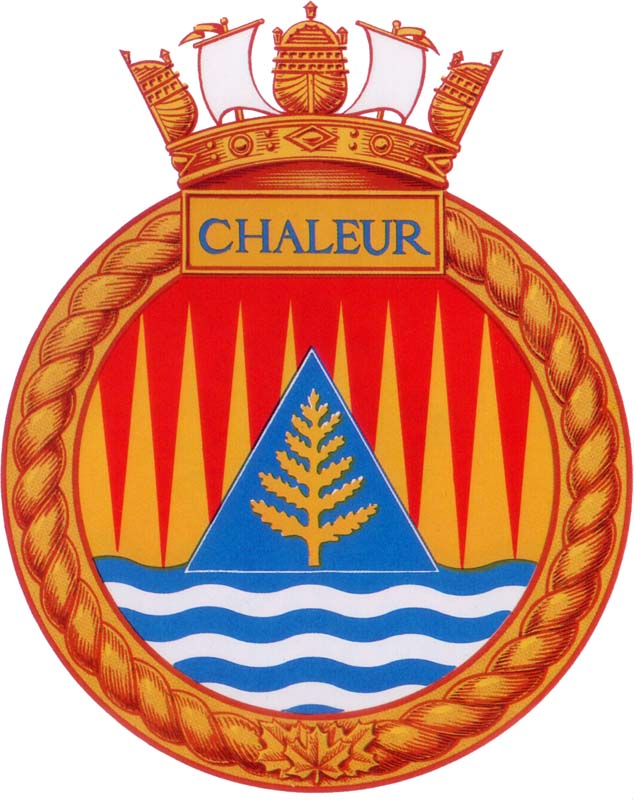HMCS CHALEUR Badge

Blazon
A field pile or and gules above a barry wavy azure and argent, and in the center an equilateral triangle azure bearing a fern leaf or.
(Glossary of Heraldic Terms)
Significance
In July 1534, Jacques Cartier in his explorations in the Gulf of St. Lawrence sailed into a deep bay in hope of discovering a passage leading to the west. Cartier and his men were somewhat alarmed when they came upon a band of Micmacs in 40 or 50 canoes. These Indigenous people eventually proved to be friendly and traded all their furs and even clothing for a few knives, tools and
trinkets.
The weather on that July day of 1534 was no doubt like similar July days in modern times - hot and humid, and Cartier and his men suffering greatly from the heat called the place "la baye de Chaleur" (The Bay of Heat). The English version is of course the Bay of Chaleur from which our Canadian ship of war takes her name. In the badge design, the heraldic water in the base refers to the Bay of Chaleur, and the red and gold shafts of the background above it are intended to convey in heraldic style the impression of heat rising. The triangular device in the centre displaying a golden fern leaf refers to the fact that the Bay of Chaleur lies in the heart of the Micmac country, and also to the meeting of Cartier with
the Micmac people in 1534. The fern leaf is derived from the Micmac legend that tells of the slaying of his evil twin brother by Glooscap the Good who was a prophet of the great spirit or manitou. Glooscap was supposed to have clubbed this evil twin to death with a fern - of all things! This suggests perhaps, that it is the spirit behind the weapon that makes for a good fight, which is quite appropriate for a ship of war. The triangle on which
the fern is displayed is intended to mean the place where
Micmacs live and is shown in the form of a wigwam.
Remarks
Bay Class Minesweeper
Colours
Gold and red
References
Badges Of The Canadian Navy by Arbuckle, J. Graeme. Halifax: Nimbus Publishing, 1987.
CFP 267 - Badges of the Canadian Forces, Minister of Supply and Services Canada, 1977.
